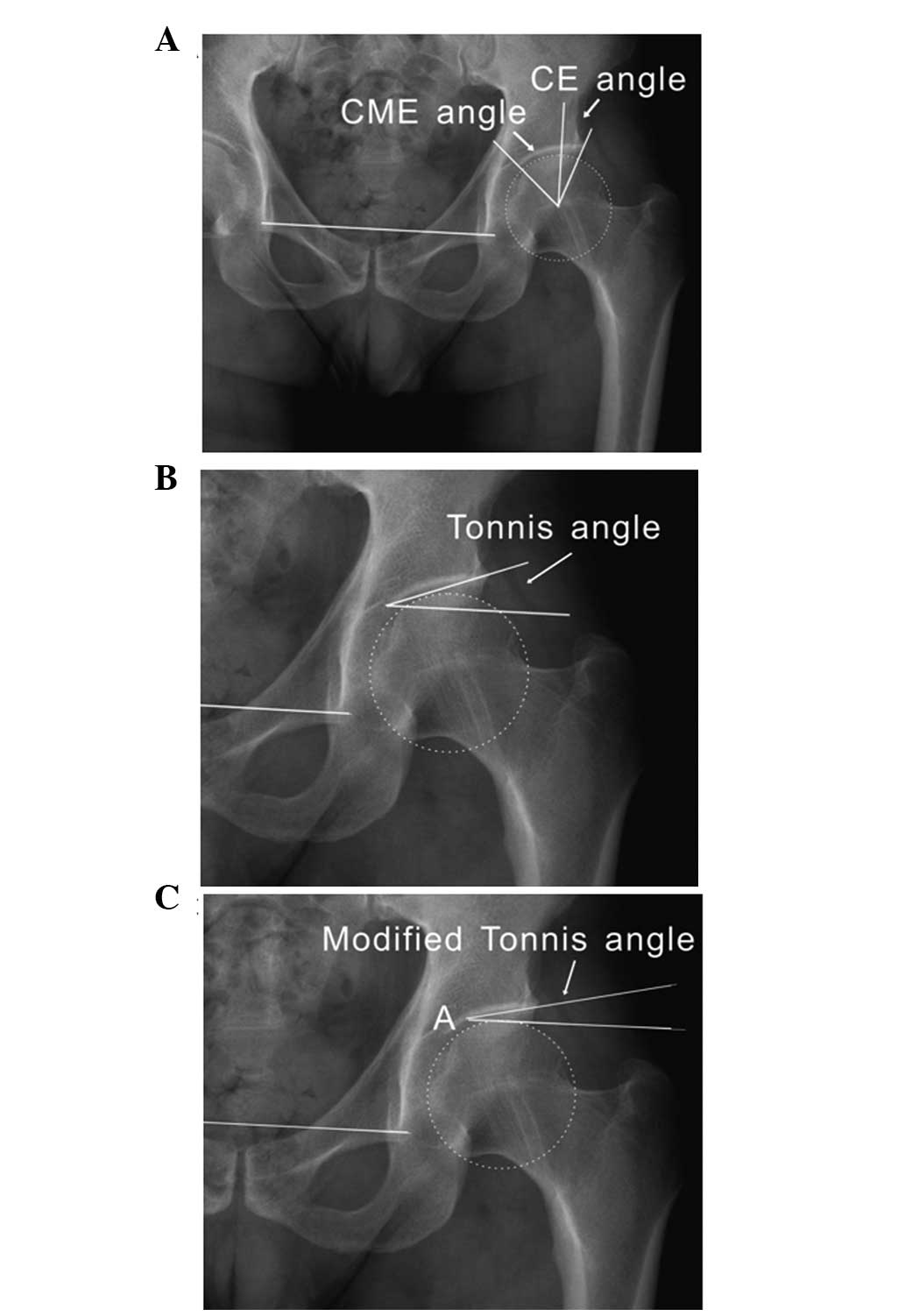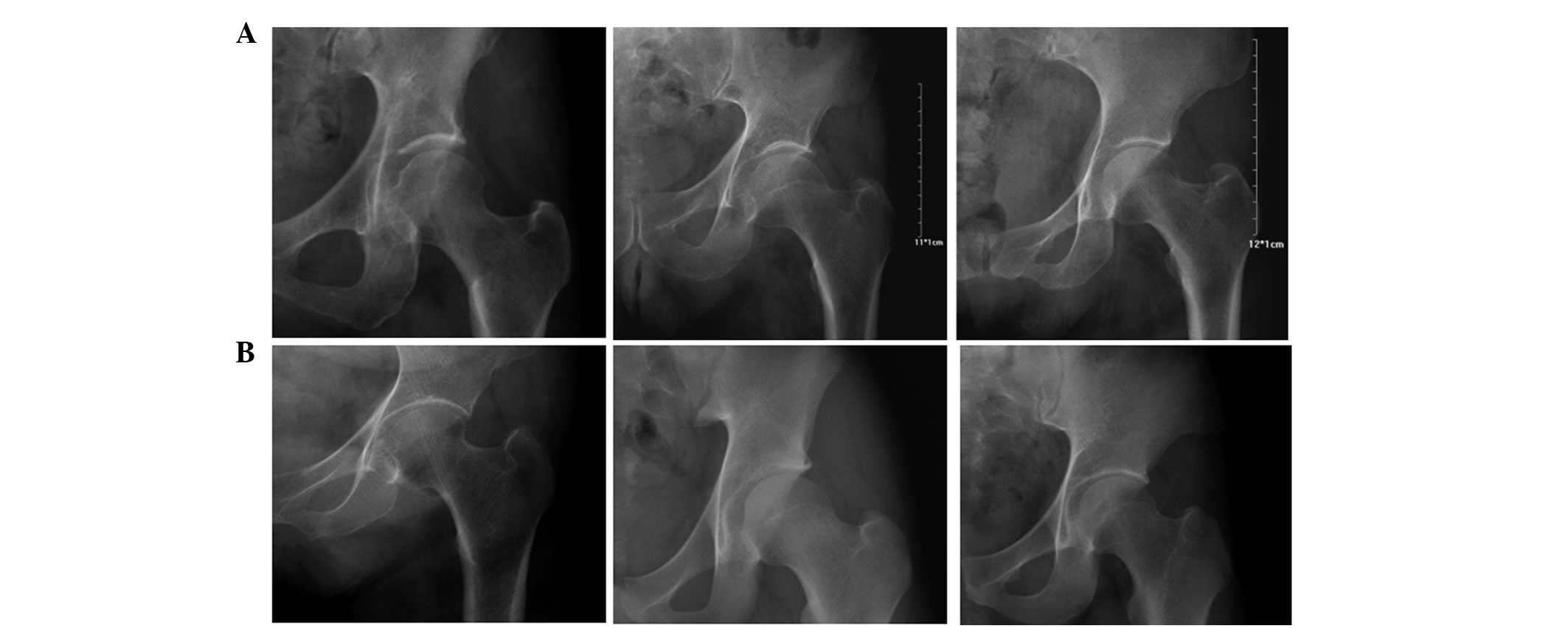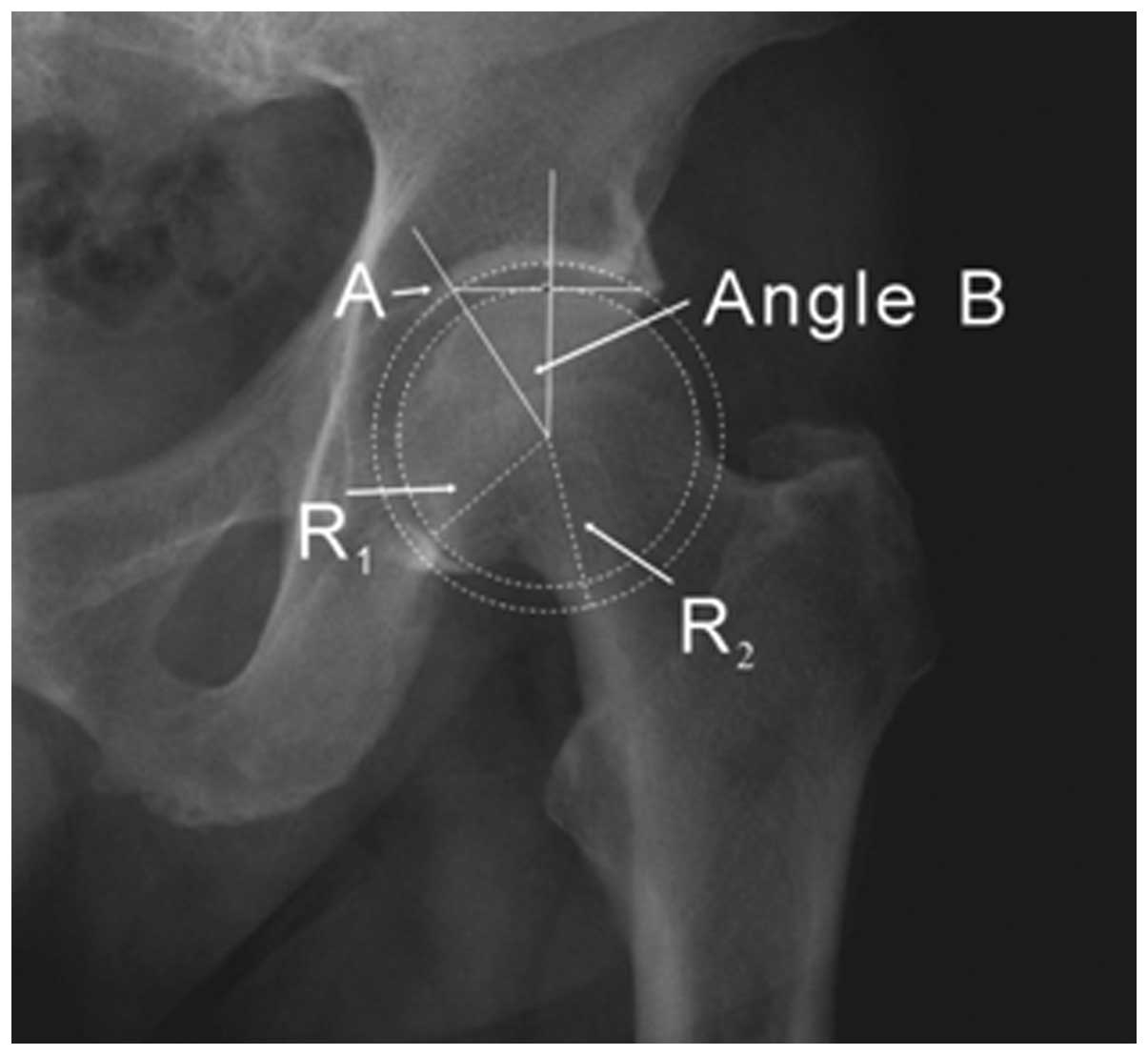|
1
|
Croft P, Cooper C, Wickham C and Coggon D:
Osteoarthritis of the hip and acetabular dysplasia. Ann Rheum Dis.
50:308–310. 1991. View Article : Google Scholar : PubMed/NCBI
|
|
2
|
Jacobsen S and Sonne-Holm S: Hip
dysplasia: a significant risk factor for the development of hip
osteoarthritis. A cross-sectional survey. Rheumatology (Oxford).
44:211–218. 2005. View Article : Google Scholar : PubMed/NCBI
|
|
3
|
Lau EM, Lin F, Lam D, Silman A and Croft
P: Hip osteoarthritis and dysplasia in Chinese men. Ann Rheum Dis.
54:965–969. 1995. View Article : Google Scholar : PubMed/NCBI
|
|
4
|
Lequesne M, Malghem J and Dion E: The
normal hip joint space: variations in width, shape, and
architecture on 223 pelvic radiographs. Ann Rheum Dis.
63:1145–1151. 2004. View Article : Google Scholar : PubMed/NCBI
|
|
5
|
Hartofilakidis G, Karachalios T and Stamos
KG: Epidemiology, demographics, and natural history of congenital
hip disease in adults. Orthopedics. 23:823–827. 2000.PubMed/NCBI
|
|
6
|
Weinstein SL: Natural history of
congenital hip dislocation (CDH) and hip dysplasia. Clin Orthop
Relat Res. 225:62–76. 1987.PubMed/NCBI
|
|
7
|
Beltran LS, Rosenberg ZS, Mayo JD, et al:
Imaging evaluation of developmental hip dysplasia in the young
adult. AJR Am J Roentgenol. 200:1077–1088. 2013. View Article : Google Scholar : PubMed/NCBI
|
|
8
|
Angliss R, Fujii G, Pickvance E,
Wainwright AM and Benson MK: Surgical treatment of late
developmental displacement of the hip. Results after 33 years. J
Bone Joint Surg Br. 87:384–394. 2005.PubMed/NCBI
|
|
9
|
Terjesen T: Residual hip dysplasia as a
risk factor for osteoarthritis in 45 years follow-up of
late-detected hip dislocation. J Child Orthop. 5:425–431.
2011.PubMed/NCBI
|
|
10
|
Murphy SB, Ganz R and Müller ME: The
prognosis in untreated dysplasia of the hip. A study of
radiographic factors that predict the outcome. J Bone Joint Surg
Am. 77:985–989. 1995.PubMed/NCBI
|
|
11
|
Pereira F, Giles A, Wood G and Board TN:
Recognition of minor adult hip dysplasia: which anatomical indices
are important? Hip Int. 24:175–179. 2014. View Article : Google Scholar : PubMed/NCBI
|
|
12
|
Anderson LA, Gililland J, Pelt C, et al:
Center edge angle measurement for hip preservation surgery:
technique and caveats. Orthopedics. 34:862011.PubMed/NCBI
|
|
13
|
Brannon JK: Hip arthroscopy:
intra-articular saucerization of the acetabular cotyloid fossa.
Orthopedics. 35:e262–e266. 2012.PubMed/NCBI
|
|
14
|
Siebenrock KA, Kalbermatten DF and Ganz R:
Effect of pelvic tilt on acetabular retroversion: a study of pelves
from cadavers. Clin Orthop Relat Res. 407:241–248. 2003. View Article : Google Scholar : PubMed/NCBI
|
|
15
|
Wiberg G: Studies on dysplastic acetabula
and congenital subluxation of the hip joint: With special reference
to the complication of osteo-arthritis. Acta Chir Scand. 83(Suppl
58): 5–135. 1939.PubMed/NCBI
|
|
16
|
Laborie LB, Engesæter IØ, Lehmann TG, et
al: Radiographic measurements of hip dysplasia at skeletal maturity
- new reference intervals based on 2,038 19-year-old Norwegians.
Skeletal Radiol. 42:925–935. 2013.PubMed/NCBI
|
|
17
|
Werner CM, Copeland CE, Ruckstuhl T, et
al: Relationship between Wiberg’s lateral center edge angle,
Lequesne’s acetabular index, and medial acetabular bone stock.
Skeletal Radiol. 40:1435–1439. 2011.
|
|
18
|
Lequesne M: Coxometry. Measurement of the
basic angles of the adult radiographic hip by a combined
protractor. Rev Rhum Mal Osteoartic. 30:479–485. 1963.(In
French).
|
|
19
|
Carlisle JC, Zebala LP, Shia DS, et al:
Reliability of various observers in determining common radiographic
parameters of adult hip structural anatomy. Iowa Orthop J.
31:52–58. 2011.PubMed/NCBI
|
|
20
|
Terjesen T and Gunderson RB: Reliability
of radiographic parameters in adults with hip dysplasia. Skeletal
Radiol. 41:811–816. 2012. View Article : Google Scholar : PubMed/NCBI
|
|
21
|
Bouttier R, Morvan J, Mazieres B, et al:
Reproducibility of radiographic hip measurements in adults. Joint
Bone Spine. 80:52–56. 2013. View Article : Google Scholar : PubMed/NCBI
|
|
22
|
Malizos KN, Zibis AH, Dailiana Z, et al:
MR imaging findings in transient osteoporosis of the hip. Eur J
Radiol. 50:238–244. 2004. View Article : Google Scholar : PubMed/NCBI
|



















